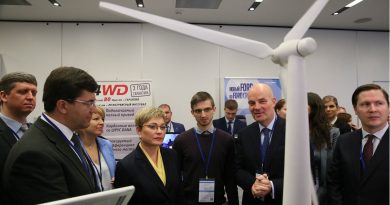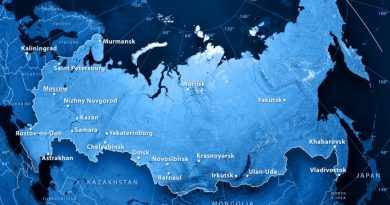Finnish Lapland plans incentives to attract filmmakers to region

Many regions in Finland already have production incentives in place, and Lapland is planning to join the race.
The Finnish Lapland Film Commission is preparing to introduce a regional production incentive early next year, aimed at attracting more, and bigger, movie and TV productions to Lapland.
The exotic backdrop of Finnish Lapland does appeal to many filmmakers, and does draw productions, but the Film Commission wants to give this appeal a further boost.
“If productions now spend a few million euros a year in Lapland, one could ask whether we’d want tens of millions to be spent on productions in the region. If the answer is yes, then an incentive is absolutely essential,” says project manager Antti Toiviainen.
He points out that technological developments also underline the importance of incentives in attracting film productions these days.
“Digital possibilities mean that you don’t necessarily have to come to an area to shoot as much, but can instead produce in the studio. In this sense, too, an incentive is absolutely crucial,” he says.
Transparent system
At least six regions in Finland offer regional incentives for audiovisual productions.
In practical terms, the incentives involve reimbursing production companies for part of the costs incurred on location.
Depending on the region, the production cost rebates vary between 10 percent and 25 percent. Budgets allocated for these projects also vary considerably, from 200,000 euros in Oulu to one million euros in Tampere, for example.
One of the advantages of the incentive scheme is its transparency.
“The system makes it possible to count every euro that has come into the region. So we know exactly how much money has been invested and how much the production has brought in, and in what form the returns come back to the region,” Toiviainen explains.
Not a grant, but an investment
The Lapland Film Commission prefers to talk about its planned incentive as an investment, not a grant. A small easing of costs can bring significant income to the region, as production companies buy services and employ local people.
Toiviainen gives an example of the regional economic impact from Tampere, where he has previously worked on similar issues.
“In Tampere, over a period of four to five years, some three million euros have been spent as incentives, bringing in some 30 million to the region in the form of wages and various service purchases, hotel accommodation, and restaurant services,” he says.
He also points to the community benefits and the positive impact on image.
“Residents see it as a positive sign when film crews move around the area. They can be proud of their local area and their skills. In addition, there is the image factor, wanting to be at the forefront of the audiovisual industry, which then also adds to the attractiveness of the area and boosts tourism,” Antti Toiviainen adds.
The aim is to prepare the Lapland incentive scheme this year so that it can be implemented by next year at the latest.
Initially, funding will be provided by municipalities. The Lapland Film Commission is part of House of Lapland, a marketing and communications organization owned by several municipalities, municipalities’ associations or municipal development companies in Lapland.
The system envisaged for Finnish Lapland would also provide security for companies that sell their services to production companies. Incentive money is only available on the basis of invoices paid, so production companies are unlikely to leave their payments hanging.
Last year, there was a furore about invoice payment irregularities after the filming in Lapland of the Constellation series commissioned by AppleTV+.
As of yet, Toivainen is not able to estimate the percentage of rebates that will be available to production companies, or the total funding of the scheme.
What he considers even more important than the size of the annual budget is continuity.
“Hopefully we could agree on a three-year budget, for example, so that we could promote Lapland as a film location,” he says.
High demand for national incentive
Finland also has a national incentive for audiovisual productions. This past autumn, the country’s audiovisual sector was alarmed by a government plan to abolish it altogether. In the end, the national incentive was reinstated in the state budget.
According to Toivainen even that brief period of uncertainty lost Finland some international productions. He says that the attraction of Finland and Lapland is clear from the fact that when the applications for the year’s national incentive were opened, all the funds budgeted were reserved on the first day.
Related stories from around the North:
Canada : Calgary-based Inuvialuk artist Kablusiak named winner of $100,000 Sobey Art Award, The Canadian Press
Finland : Sami joik, symphonic music fusion from Finland makes int’l debut in Ottawa, Eye on the Arctic
Greenland: New exhibition features 2000 years of Inuit art from Canada, Alaska, Greenland & Siberia, Eye on the Arctic
Norway: Certification marks help both Sami artisans and consumers, says council, Eye on the Arctic
Sweden: Arctic city of Kiruna competing for the European Capital of Culture title, Radio Sweden
United States: How Inuit culture helped unlock power of classical score for Inupiaq violinist, Eye on the Arctic



